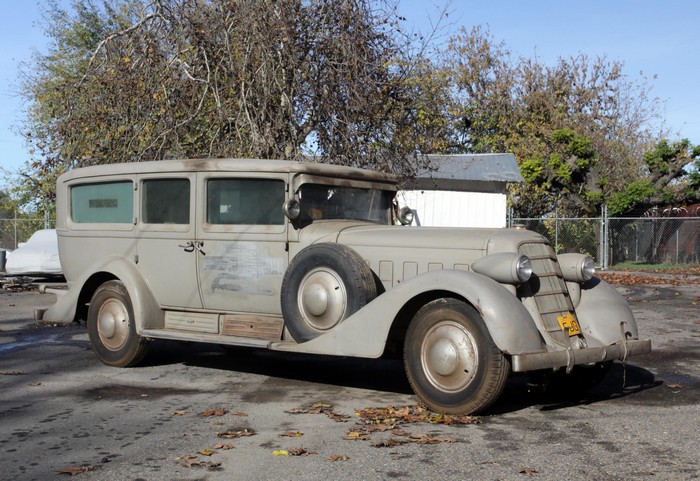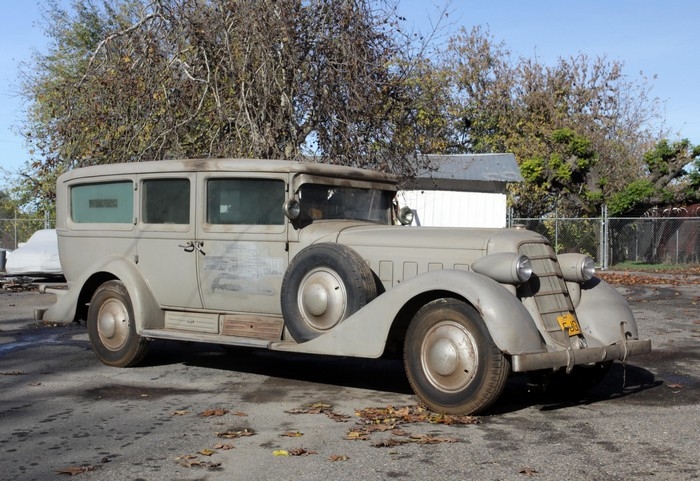
Quiet, strong, flexible and powerful, the Cadillac V16 defined luxury in the golden age of classic luxury automobiles. As brilliantly styled under the hood as its Harley Earl exterior, it exuded quality and exclusivity that were reinforced by the refinement of its drivetrain and chassis.
The Cadillac V16 was also durable, which explains the transformation of the 1930 Cadillac 452 V16 body style 4375S Fleetwood Four Door Sedan into an ambulance with a 1935 Cadillac V16 grille, hood, skirted front and rear fenders, and 1935 Cadillac 17-inch wheels, hubcaps and trim rings.
Cadillac V16s were too good not to keep in service, and the cost of updating was far less than a new ambulance. In the depths of the Great Depression, it simply made sense.
Preserved in original condition for many years in the Pierce A. Miller Carriage Collection, this Cadillac presents an intriguing challenge for collectors.
(Introductory description courtesy of Bonhams.)

